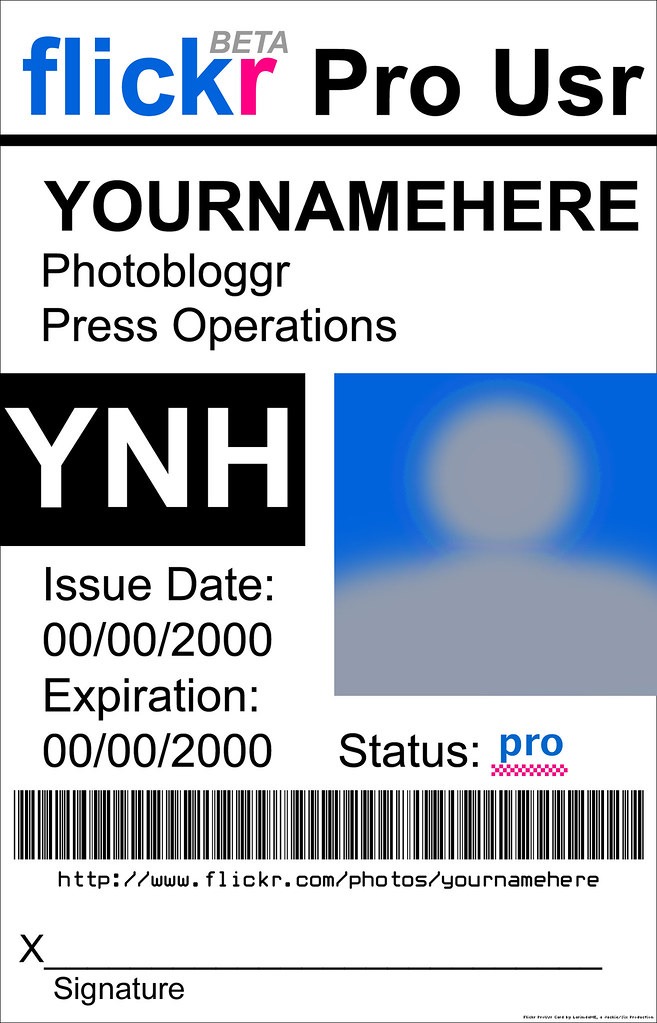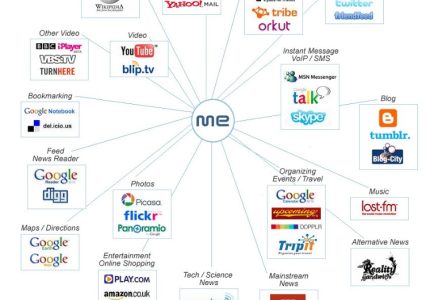Understanding Template Website Design
Template website design offers a streamlined approach to creating attractive and functional websites by providing pre-designed layouts and structures. It allows users to customize elements easily while maintaining a professional look, making it an ideal choice for businesses, bloggers, and entrepreneurs. Understanding the fundamentals of template website design can help in building an effective online presence quickly and efficiently.
Definition and Purpose of Templates
Template website design refers to pre-designed web page layouts that can be customized to create a complete website. These templates serve as a foundation, providing the structure, style, and layout that can be adapted to suit different purposes and brands.
The purpose of templates in website design is to simplify the development process by offering ready-made components and design elements. They enable users to build professional-looking websites quickly without needing extensive coding skills, ensuring consistency in appearance and functionality across pages.
Types of Website Templates
Understanding template website design is essential for creating efficient and visually appealing websites. Templates provide a pre-designed layout that streamlines the development process, allowing creators to focus on content rather than starting from scratch. They ensure consistency across pages and can be customized to suit specific needs. Exploring different types of website templates helps in selecting the right design that aligns with the purpose of the website, whether it is for e-commerce, portfolio, blog, or corporate use. By leveraging these templates, web designers can save time, reduce costs, and deliver professional results.
There are various types of website templates, each tailored for different functionalities and styles. HTML templates are static and usually serve simple websites, offering fixed layouts that need manual editing. CMS templates are designed for content management systems like WordPress, Joomla, or Drupal, providing dynamic capabilities and easier content updates. Responsive templates adapt seamlessly to different devices and screen sizes, ensuring accessibility on desktops, tablets, and smartphones. E-commerce templates are built specifically for online stores, integrating product pages, shopping carts, and checkout processes. Additionally, niche-specific templates cater to particular industries such as real estate, education, or hospitality, providing specialized features relevant to those fields. Choosing the right template type significantly impacts the website’s effectiveness and user experience.
Key Components of Template Website Design
Template website design encompasses essential elements that create an attractive and functional online presence. These components work together to ensure the website is user-friendly, visually appealing, and easy to navigate. Understanding the key parts of a template helps in crafting a website that effectively communicates its purpose and engages visitors.
Layout and Structure
Template website design relies on essential components that create a cohesive and user-friendly structure. The layout is the foundation, determining how content is arranged on the page and guiding the user’s navigation experience. A clear and organized layout ensures that visitors can easily find information and interact with the website effectively.
The grid system is a common framework used to align elements consistently across different pages, contributing to visual harmony. The structure of a template website typically includes a header, main content area, sidebar (if applicable), and footer, each serving specific purposes and maintaining consistency throughout the site.
Navigation menus are critical components, allowing users to move seamlessly between sections. They should be simple, intuitive, and accessible. Visual hierarchy is also important, achieved through size, color, and placement, to highlight key content and guide user attention logically.
Responsive design elements ensure that the website adapts to various devices and screen sizes, maintaining usability and aesthetics. Additionally, incorporating placeholders for images, text, and call-to-action buttons enhances flexibility and ease of customization in template websites.
Color Schemes and Typography
Template website design relies on several key components to create visually appealing and functional websites. These components include layout structure, color schemes, typography, imagery, and navigation. A well-designed template balances these elements to ensure a seamless user experience and aesthetic harmony.
Color schemes play a vital role in template website design by establishing mood, branding, and visual hierarchy. Choosing a cohesive palette that complements the website’s purpose helps attract visitors and improve readability. Typically, designers select primary, secondary, and accent colors to create contrast and guide user attention across different sections of the site.
Typography is equally important, as it affects readability and brand personality. Selecting appropriate font styles, sizes, and spacing ensures that content is easy to read and visually consistent throughout the website. Combining complementary fonts for headings and body text can enhance the overall design, making the site more engaging and professional.
Navigation Menus
Navigation menus are a crucial component of template website design, providing users with a clear and intuitive way to explore the site. They should be located in easily accessible areas, typically at the top or side of the page, and include organized links to important sections. Well-designed menus enhance user experience by making content retrieval straightforward and efficient.
Key components of a template website design include a responsive layout that adapts to different devices, visually appealing graphics and color schemes that align with branding, and clear typography to ensure readability. Consistent styling across pages helps create a cohesive look and feel, while strategically placed call-to-action buttons guide users toward desired actions.
Effective navigation menus often utilize dropdowns or flyouts for nested links, providing a clean interface for deeper site structures. Additionally, search functionality can supplement menus to quickly help users find specific information. Overall, combining these elements results in a user-friendly, visually appealing website that effectively communicates its purpose and guides visitors seamlessly through its content.
Images and Graphics
Images and graphics are essential components of template website design as they help create visual appeal and enhance user engagement. Well-chosen visuals can communicate the message more effectively and convey the brand’s personality. High-quality images should be optimized for fast loading times to ensure a smooth user experience. Graphics such as icons, illustrations, and infographics add visual interest and can guide visitors through the site’s content. Consistent style, color scheme, and theme across images and graphics strengthen the overall cohesiveness of the design. Incorporating relevant visuals that align with the website’s purpose can also improve navigability and foster a memorable impression on visitors.
Content Sections
Template website design incorporates several key components that ensure a functional and visually appealing layout. These components work together to create an effective user experience and convey the intended message clearly.
- Header: Typically includes the logo, navigation menu, and sometimes contact information or call-to-action buttons, providing immediate access to essential links.
- Hero Section: The prominently displayed area often featuring a large image or slider with a compelling headline and a call-to-action to engage visitors instantly.
- Content Sections: Divided into various parts such as About, Services, Portfolio, or Blog, these sections present information in an organized and digestible manner.
- Sidebar: An optional component for additional navigation, recent posts, advertisements, or contact details that complement the main content.
- Footer: Located at the bottom, it includes links to privacy policies, social media icons, contact information, and other relevant links for easy accessibility.
Effective content sections are designed to be clear, informative, and engaging, guiding users seamlessly throughout the website. They often include headings, subheadings, images, videos, and call-to-action buttons to enhance interaction and convey key messages effectively.
Advantages of Using Template Website Design
Template website design offers numerous advantages that make it an attractive choice for individuals and businesses looking to establish an online presence. By providing pre-designed layouts and structures, templates simplify the website creation process, saving time and reducing development costs. Additionally, they ensure a professional appearance, even for those with limited technical skills, and allow for easy customization to match specific branding requirements. Overall, template website design combines efficiency, affordability, and versatility, making it a popular option for building effective and attractive websites.
Cost-Effectiveness
Template website design offers numerous advantages, particularly in terms of cost-effectiveness. By utilizing pre-designed templates, businesses and individuals can significantly reduce the expenses associated with custom website development. These templates eliminate the need for extensive coding and design work, allowing for quicker deployment and fewer resources spent on development teams. Moreover, templates often come with built-in features and responsive layouts, reducing additional costs for plugins or modifications. This makes it a practical choice for startups, small businesses, or anyone looking to establish an online presence without overspending.
Time Savings
Using template website design offers significant time savings, allowing users to quickly set up a professional-looking website without starting from scratch. Templates provide pre-designed layouts and structure, reducing the time spent on planning and designing individual elements. This efficiency enables businesses and individuals to launch their websites faster, helping them to establish an online presence promptly. Additionally, templates often come with built-in features and functionalities that streamline the development process, further accelerating the website creation timeline.
Ease of Customization
Template website design offers numerous advantages, making it an appealing choice for individuals and businesses seeking a professional online presence. One significant benefit is ease of customization, allowing users to modify layouts, colors, and content to match their unique branding without extensive coding knowledge. This flexibility enables quick updates and adjustments, ensuring the website stays current and aligned with changing business needs. Additionally, templates often come with pre-designed elements and structure, simplifying the development process and reducing overall costs. The streamlined customization process helps users create visually appealing websites efficiently, saving time and effort while maintaining a polished appearance.
Consistency and Professional Appearance
Using template website design offers several advantages that enhance the overall functionality and visual appeal of a website. It ensures consistency across various pages, providing a seamless experience for visitors and reinforcing brand identity. Additionally, a professional appearance achieved through well-designed templates can boost credibility and attract more users.
- Consistency: Templates ensure that fonts, colors, layouts, and other design elements remain uniform throughout the website, creating a cohesive look and feel.
- Professional Appearance: Well-crafted templates give websites a polished and credible look, which can help in building trust with visitors.
- Time and Cost Efficiency: Using pre-designed templates reduces development time and costs, allowing faster deployment of websites.
- Ease of Use: Templates often come with customizable features, making it easier for non-technical users to update and manage website content.
- Branding Support: Templates can be customized to match brand colors, logos, and styles, enhancing brand recognition.
- Responsive Design: Many templates are built to be mobile-friendly, ensuring the website looks good on all devices.
Choosing the Right Website Template
Choosing the right website template is a crucial step in creating an effective and visually appealing online presence. A well-selected template not only enhances user experience but also aligns with your brand’s identity and goals. By understanding the key features and customization options, you can ensure your website stands out and functions seamlessly across various devices.
Assessing Business and Website Goals
Choosing the right website template is essential for creating an effective online presence that aligns with your business objectives. A well-selected template should not only match your visual branding but also support your website’s functionality and user experience needs. It’s important to evaluate how the design complements your content and whether it can adapt as your business evolves.
Assessing your business and website goals is a crucial step before selecting a template. Clarify what you want to achieve with your website, such as increasing sales, showcasing portfolio work, or providing information. Understanding your target audience and their preferences will help identify features and layouts that resonate with them. Additionally, consider the scalability of the template to ensure it can grow with your business, and verify that it offers customization options to tailor the design to your unique branding and functional requirements.

Responsive Design Compatibility
Choosing the right website template is essential for ensuring your site appeals to your target audience and functions seamlessly across different devices. A well-selected template should reflect your brand identity while offering flexibility for customization. Additionally, responsiveness is a critical factor, as it guarantees your website looks and operates effectively on desktops, tablets, and smartphones. Responsive design compatibility involves using adaptable layouts, scalable images, and flexible grids that adjust to various screen sizes without compromising user experience. Prioritizing templates with built-in responsiveness reduces the need for extensive adjustments and helps you maintain a professional appearance across all devices. Ultimately, selecting a template that combines aesthetic appeal with responsive design ensures your website remains accessible, engaging, and user-friendly in today’s multi-device landscape.
Customization Options
Choosing the right website template is essential for establishing a professional and attractive online presence. It ensures that your site effectively showcases your content or products while aligning with your brand identity. A well-selected template provides a balance between aesthetics and functionality, making it easier for visitors to navigate and engage with your site.
When exploring customization options, consider templates that offer flexible design features such as customizable layouts, color schemes, and fonts. Look for built-in tools that allow you to easily modify elements without extensive coding knowledge. Responsive design options are also important, ensuring your website looks great on all devices. Some templates include pre-designed sections for galleries, blogs, or e-commerce, enabling you to tailor your website to your specific needs effortlessly.
Support and Updates
When selecting a website template, it is essential to consider how well it aligns with your brand’s aesthetics and functionality needs. A good template should be customizable, responsive across devices, and easy to navigate, ensuring a seamless user experience. Additionally, the template’s compatibility with your chosen content management system or platform can significantly streamline your website development process.
Support and updates are vital factors in maintaining a secure and efficient website. Opt for templates from reputable providers that offer regular updates to fix bugs, enhance features, and ensure compatibility with the latest web standards. Reliable support channels, such as live chat, email, or comprehensive documentation, can save time and help resolve issues swiftly, ensuring your website remains functional and up-to-date over time.
Popular Platforms for Template Website Design
Template website design platforms offer a convenient and efficient way to create visually appealing and functional websites without extensive coding knowledge. These popular platforms provide a wide range of customizable templates that cater to various industries and styles, enabling users to quickly establish an online presence. With user-friendly interfaces and advanced features, they have become essential tools for entrepreneurs, small business owners, and hobbyists alike.
WordPress
WordPress is one of the most popular platforms for template website design due to its user-friendly interface and extensive library of themes and plugins. It offers a wide range of customizable templates suitable for various industries, making it accessible for both beginners and experienced developers. Other notable platforms include Wix, which provides a drag-and-drop website builder with numerous templates that are easy to personalize, and Squarespace, known for its sleek, modern templates tailored toward creative professionals and small businesses. Shopify is also highly regarded for e-commerce websites, offering a variety of templates optimized for online selling. All these platforms facilitate quick, professional website creation through pre-designed templates, reducing development time and offering flexibility in design customization.
Wix
Wix is one of the most popular platforms for template website design, offering a user-friendly interface and a wide selection of customizable templates suitable for various types of websites. It provides drag-and-drop tools that allow users without coding experience to easily create professional-looking websites. Wix’s extensive template library covers categories such as business, portfolio, online store, blog, and more, making it a versatile choice for individuals and businesses alike. Additionally, Wix offers built-in features like SEO tools, mobile optimization, and hosting, streamlining the process of launching a website with a polished and responsive design. Its popularity stems from its flexibility, ease of use, and a vibrant community of users who share tips and support.
Squarespace
Squarespace is a widely used platform for creating professional and visually appealing website templates. It offers a variety of customizable templates suitable for different industries, including portfolios, online stores, and business websites. The platform is known for its user-friendly interface and modern design options that help users build attractive websites without extensive coding knowledge.
- Elegant and customizable templates tailored for various niches
- Drag-and-drop editor making website design accessible to beginners
- Built-in tools for e-commerce, blogging, and analytics
- Responsive designs that look great on all devices
- Seamless integration with social media and marketing tools
Shopify
Shopify is one of the most popular platforms for template website design, especially for e-commerce businesses. It offers a wide range of professional and customizable templates that allow store owners to create visually appealing and functional online shops without extensive coding knowledge. Shopify’s templates are known for their responsive designs, ensuring that websites look great on all devices. Additionally, the platform provides a user-friendly interface and numerous third-party themes, making it easy to find a design that matches the brand’s identity and enhances the customer experience.
Best Practices in Template Website Design
Template website design is a vital aspect of creating an effective online presence, offering a foundation that balances aesthetics with functionality. Implementing best practices ensures that websites are visually appealing, user-friendly, and easy to navigate, which can significantly enhance user experience and engagement. By following key principles in template design, developers can streamline the creation process, maintain consistency, and create versatile websites adaptable to various needs.
Mobile Optimization
Effective template website design and mobile optimization are essential for creating a user-friendly and visually appealing online presence. Incorporating best practices ensures that websites are accessible, engaging, and functional across all devices.
- Choose a clean and responsive layout that adapts seamlessly to different screen sizes.
- Use a grid system to organize content uniformly and maintain consistency throughout the site.
- Optimize images and media for faster loading times, especially on mobile devices.
- Implement mobile-first design principles, prioritizing mobile user experience during development.
- Utilize scalable typography and touch-friendly buttons to improve usability on smaller screens.
- Avoid cluttered layouts by minimizing unnecessary elements, ensuring clarity and focus.
- Test the website across various devices and browsers to identify and fix responsiveness issues.
- Ensure navigation is simple and intuitive, using easily tappable menus and clear call-to-actions.
- Incorporate fast-loading, minimalistic design elements to enhance overall performance and user engagement.
- Regularly update the design to incorporate new trends and maintain compatibility with evolving devices and standards.
Loading Speed Optimization
Effective template website design focuses on creating visually appealing layouts that are both user-friendly and easy to customize. Utilizing a consistent color scheme, clear navigation, and responsive design ensures that visitors have a seamless experience across various devices. Prioritizing simplicity and minimalism helps maintain a clean look that directs users’ attention to essential content.

Loading speed optimization is essential for retaining visitors and improving search engine rankings. Compressing images without sacrificing quality reduces page load times significantly. Leveraging browser caching allows repeat visitors to access content faster by storing static files locally. Minimizing the use of heavy scripts and utilizing asynchronous loading techniques prevent render-blocking, further enhancing performance. Choosing a reliable hosting service and employing Content Delivery Networks spreads content across multiple servers globally, decreasing latency and improving overall site speed.
SEO-Friendly Design
Template website design is an essential aspect of creating effective and user-friendly websites that can be easily customized to meet specific needs. When developing a template, focusing on best practices ensures the site is not only aesthetically pleasing but also functional and scalable. A clean and organized layout helps users navigate the site effortlessly, improving overall user experience.
One crucial best practice is to maintain a consistent visual hierarchy, using clear headings, subheadings, and visual cues to guide visitors through the content. Utilizing responsive design techniques ensures the template displays well on all devices, including desktops, tablets, and smartphones, which is vital for reaching a broad audience. Additionally, optimizing load times by compressing images and combining code minimizes bounce rates and enhances user satisfaction.
In terms of SEO-friendly design, it’s important to incorporate semantic HTML tags that help search engines understand the structure of the content. Proper use of headings, descriptive alt text for images, and clean URLs contribute to better indexing. Fast-loading pages, mobile-friendly layouts, and accessible design practices also boost SEO performance. Creating a flexible template that supports easy keyword integration and includes metadata management ensures the website can rank higher in search engine results, ultimately increasing visibility and traffic.
Accessibility Considerations
Best practices in template website design focus on creating visually appealing, user-friendly, and easily maintainable layouts that enhance the overall user experience. Using a clean and consistent structure helps visitors navigate the site effortlessly and find information quickly. It’s important to prioritize simplicity by avoiding clutter and using ample white space to improve readability. Responsive design ensures the website looks and functions well across various devices and screen sizes, which is essential in today’s mobile-centric world.
In terms of accessibility considerations, designing with inclusivity in mind allows all users, regardless of their abilities, to access and interact with the website effectively. This includes providing sufficient contrast between text and background, using clear and legible fonts, and ensuring proper semantic HTML markup to assist screen readers. Navigation should be straightforward, with descriptive labels for links and buttons, enabling users with disabilities to understand and navigate the site without confusion. Additionally, incorporating keyboard navigation and ensuring that all interactive elements are easily accessible via keyboard enhances overall accessibility. By integrating these best practices, website templates can deliver a positive, inclusive experience for a diverse audience.
Future Trends in Template Website Design
Template website design continues to evolve rapidly, driven by technological advancements and changing user expectations. Staying ahead in this space requires understanding upcoming trends that will shape the way websites are built and experienced. From innovative layout strategies to personalized user interfaces, future trends promise more engaging, flexible, and visually appealing websites that cater to diverse needs and preferences.
AI-Driven Customization
Future trends in template website design are increasingly focused on AI-driven customization, aiming to create more personalized and efficient user experiences. AI technology is transforming how templates are designed and utilized, allowing for dynamic adaptations based on user behavior and preferences.
- Enhanced Personalization: AI tools will enable templates to automatically adjust layouts, color schemes, and content to match individual user tastes, increasing engagement and satisfaction.
- Automated Content Generation: AI algorithms will assist in creating relevant content snippets, headlines, and product descriptions, streamlining website updates and maintenance.
- Responsive and Adaptive Designs: Future templates will employ AI to optimize responsiveness across devices, ensuring consistent quality regardless of screen size or platform.
- Intelligent User Interface Customization: AI will analyze visitor interactions to modify interface elements in real-time, improving usability and conversion rates.
- Streamlined Development with AI Assistance: Template builders will incorporate AI to suggest layout improvements, design alternatives, and code optimizations, reducing development time and costs.
Minimalist and Modern Aesthetics
Future trends in template website design are increasingly focused on creating clean, user-centric experiences that emphasize simplicity and functionality. Minimalist and modern aesthetics are shaping the way websites are built, prioritizing clarity and ease of navigation for users. As technology advances, there is a growing preference for templates that incorporate bold typography, subtle color palettes, and streamlined layouts to enhance readability and visual appeal. Additionally, the integration of dynamic elements such as micro-interactions and animated transitions is expected to increase, making websites more engaging without sacrificing minimalism. Responsive design remains a key aspect, ensuring templates look and perform well across all devices, while the use of artificial intelligence and customization options will allow for more personalized user experiences. Overall, future template designs will blend aesthetic elegance with practical functionality, fostering intuitive and visually compelling web interfaces.
Interactive and Dynamic Elements
Future trends in template website design are increasingly focused on creating engaging, responsive, and personalized user experiences through innovative interactive and dynamic elements. As technology advances, designers are incorporating more sophisticated animations, micro-interactions, and real-time data integration to make websites more compelling and user-centric.
Interactive features such as hover effects, clickable sliders, and engaging transition animations are becoming standard, enhancing user engagement and guiding visitors seamlessly through content. Dynamic elements like live chat widgets, personalized content based on user behavior, and real-time updates are also gaining popularity, providing a more immersive and tailored browsing experience.
Additionally, the integration of artificial intelligence and machine learning allows templates to adapt content dynamically, optimizing layouts and features for individual users. The rise of progressive web apps and mobile-first design principles further influence the development of adaptable, fast-loading templates with interactive capabilities that work flawlessly across all devices.
Overall, future template website designs will emphasize a harmonious balance of aesthetics, functionality, and interactivity, leveraging cutting-edge technologies to deliver memorable and efficient user experiences that meet evolving digital expectations.
Integration with Emerging Technologies
Future trends in template website design are increasingly shaped by advancements in technology and evolving user preferences. As the digital landscape expands, designers focus on creating more dynamic, personalized, and efficient templates that cater to diverse needs.
- Incorporation of Artificial Intelligence and Machine Learning: Templates will feature AI-driven customization options, enabling websites to adapt content and layouts based on user behavior.
- Progressive Web Apps (PWAs): Templates designed for PWAs will offer faster load times, offline capabilities, and a more app-like experience, blending the web and mobile app functionalities seamlessly.
- Enhanced Interactivity with Augmented Reality (AR) and Virtual Reality (VR): Future templates may integrate AR and VR elements for immersive experiences, particularly in e-commerce, real estate, and education sectors.
- Focus on Accessibility and Inclusivity: Templates will prioritize accessibility features to ensure websites are usable by all users, including those with disabilities, aligning with global standards like WCAG.
- Integration of Voice Search and Commands: With voice assistant proliferation, templates will incorporate voice control functionalities for easier navigation and interaction.
- Minimalistic and Dynamic Designs: Trends will favor sleek, minimalist aesthetics combined with animated elements and micro-interactions to enhance user engagement without overwhelming visitors.





